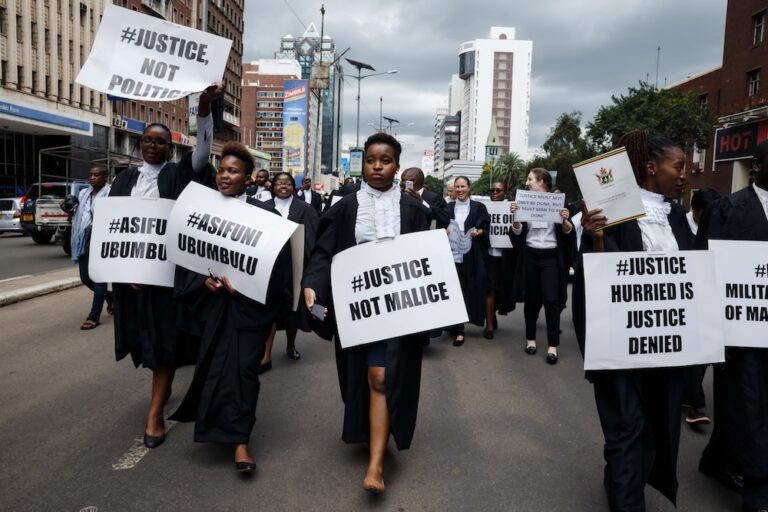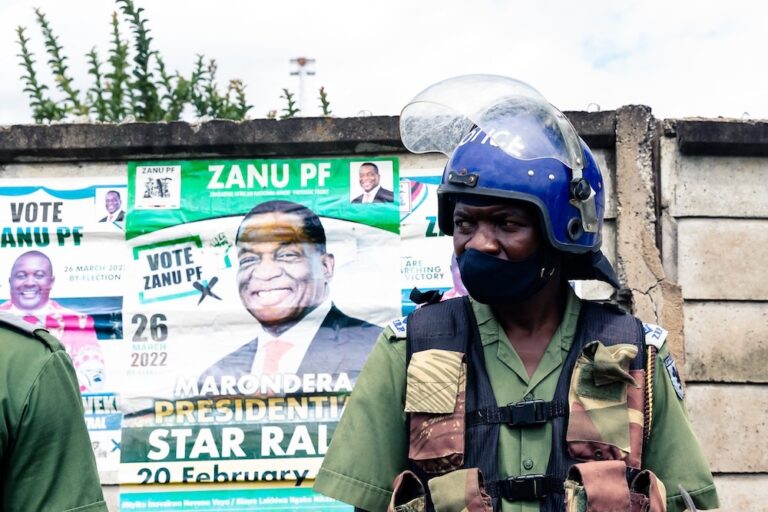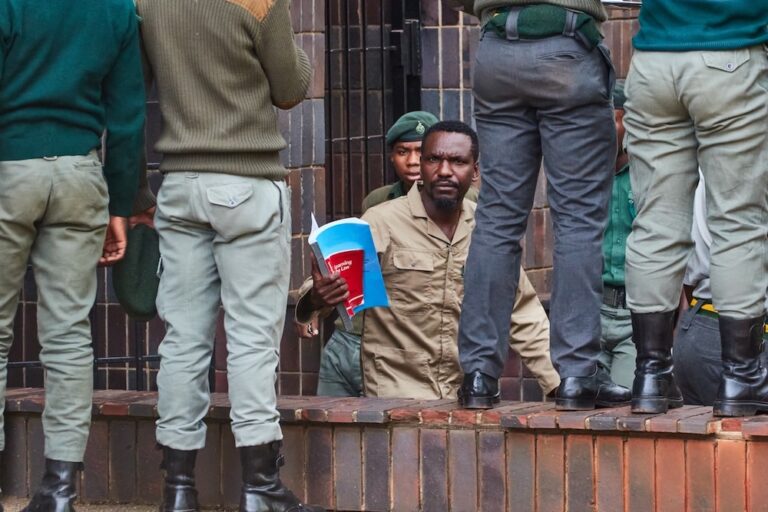(MISA/IFEX) – On 28 April 2000, the Zimbabwe police charged South African journalist Obert Siyabuliza Zilwa under Section 38 (b) (ii) of the Law and Order Maintenance Act (LOMA). Zilwa’s lawyer, Jonathan Samkange, told MISA-Zimbabwe that they were preparing for an initial remand hearing at the Rotten Row Magistrate’s Court, but that he was prepared […]
(MISA/IFEX) – On 28 April 2000, the Zimbabwe police charged South African journalist Obert Siyabuliza Zilwa under Section 38 (b) (ii) of the Law and Order Maintenance Act (LOMA). Zilwa’s lawyer, Jonathan Samkange, told MISA-Zimbabwe that they were preparing for an initial remand hearing at the Rotten Row Magistrate’s Court, but that he was prepared to take the case to the High Court to secure his client’s release.
The offence as read in the Act is:
Any person who, without lawful excuse, the proof whereof lies on him:
(a) Sets or attempts to set fire to any person, building, structure, vehicle, vessel or aircraft or any railway engine, tender, carriage, van or truck; or
(b) By the use of explosives –
(i) causes or attempts to cause injury to any person; or
(ii) destroys or causes or attempts to cause damage to any building, structure, railway line, road, airport runway, vehicle, vessel or aircraft or any railway engine, tender, carriage, van or truck;
shall be guilty of an offence and liable to imprisonment for life.
Meanwhile, a bomb hoax directed at the “Daily News” has reportedly been traced to the headquarters of the ruling Zimbabwe African National Union-Patriotic Front (ZANU-PF) party. Business came to halt at the ten-storey Trustee House, which houses the “Daily News”, after the bomb hoax on 26 April.
An anonymous telephone caller, calling through one of the newspaper’s cellphone numbers, announced that a bomb would explode at 3:15p.m. (local time). The call triggered a hasty evacuation of the building. Police reacted quickly and cordoned off the area as they entered the building to conduct a search. The building was later declared safe but close to an hour of production and business time had been lost.
The number from which the telephone call was made was recorded in the memory of the portable phone and a call to that number showed that it came from ZANU (PF) headquarters.
“ZANU (PF) headquarters, good day,” a female voice answered cheerfully at the other end, “The Daily News” reported. An official at the ZANU (PF) offices confirmed it was one of their numbers but said that there was no record of the call to the newspaper.
Background Information
On 26 April, Zimbabwe police arrested Zilwa, a photographer for Associated Press, at Harare International Airport as he was about to leave the country. A police spokesperson said Zilwa had been arrested because he was suspected of having driven the car that was seen speeding off before the bomb blast at Trustee House, which houses the offices of the “Daily News”. Police claimed he matched eyewitness descriptions of an alleged suspect seen at the scene of the blast. MISA sources reported that Zilwa apparently was at the scene at the time of the blast and then left to fetch his equipment at a nearby hotel and returned immediately.
On 22 April, a home-made bomb exploded on the ground floor of Trustee House. The bomb went off in an art gallery situated directly below the office of the paper’s editor-in-chief, Geoff Nyarota. No one was injured in the blast which partially destroyed the gallery and the distribution offices of the “Daily News”. The newspaper’s offices were closed at the time.


